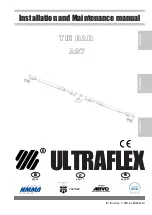
NOTE: Reactive power is prioritised in each method. The maximum possible active power that
can be fed in is reduced in line with the P-Q operating range when a specific reactive power
level is specified.
Q constant
[
VArMaxPct
]
0-100 [%
Smax
]
Setpoint of the reactive power can be ad-
justed depending on the set maximum ap-
parent power.
Timeout
[
VArPcT_RvrtTms]
0 – 1000 [s]
Sets the time after which the inverter, if it
does not receive a new reactive power
specification, falls back to the previously
valid reactive power procedure.
If the
Timeout
is set to
0
seconds, the
transmitted power factor specification is
permanently retained, even in the event of
a communication failure.
Note: when the unit is restarted, the
Timeout
is reset to the set fallback time.
cos φ(P)
In the cos ϕ (Pn) operating mode, the setpoint value of cos ϕ and the setpoint for the reactive power derived
from it are continuously calculated depending on the actual power level. This function ensures that grid sup-
port is provided by the reactive power when a significant voltage boost is anticipated due to a high feed level.
In this case, a characteristic curve is specified which can be used to configure up to 10 nodes, value pairs for ac-
tive power and cos ϕ. The active power is entered as a % in relation to the set maximum apparent power Slim.
Other parameters allow you to limit functionality and to limit activation to certain voltage ranges.
S
lim
Fig. 53:
cos ϕ (P) standard characteristic curve with 3 nodes
In Q(U) 10 nodes mode, the set value of the reactive power is calculated continuously as a function of the grid
voltage. This function ensures that grid support is provided by reactive power as soon as the voltage actually
deviates from the target voltage. In this case, a characteristic curve is specified which can be used to configure
up to 10 nodes, value pairs for voltage and reactive power. Other parameters allow to limit functionality and to
limit activation to certain power levels as well as parametrize the transient response.
The positive sequence voltage is used to calculate the reactive power target value for three-phase units.
230
207
0
Q [%PN]
U[V]
Q(U) standard characteristic
0
20
40
40
20
60
253
60
1) 43,6 | 207
2) 0 | 212
3) 0 | 230
4) 0 | 248
5) 43,6 | 253
Fig. 54:
Q(U) standard characteristic curve with 5 nodes
Manual
Specifications | 10
blueplanet gridsave 92.0 TL3-S blueplanet gridsave 110 TL3-S blueplanet gridsave 137 TL3-S
Page 67
EN-US















































